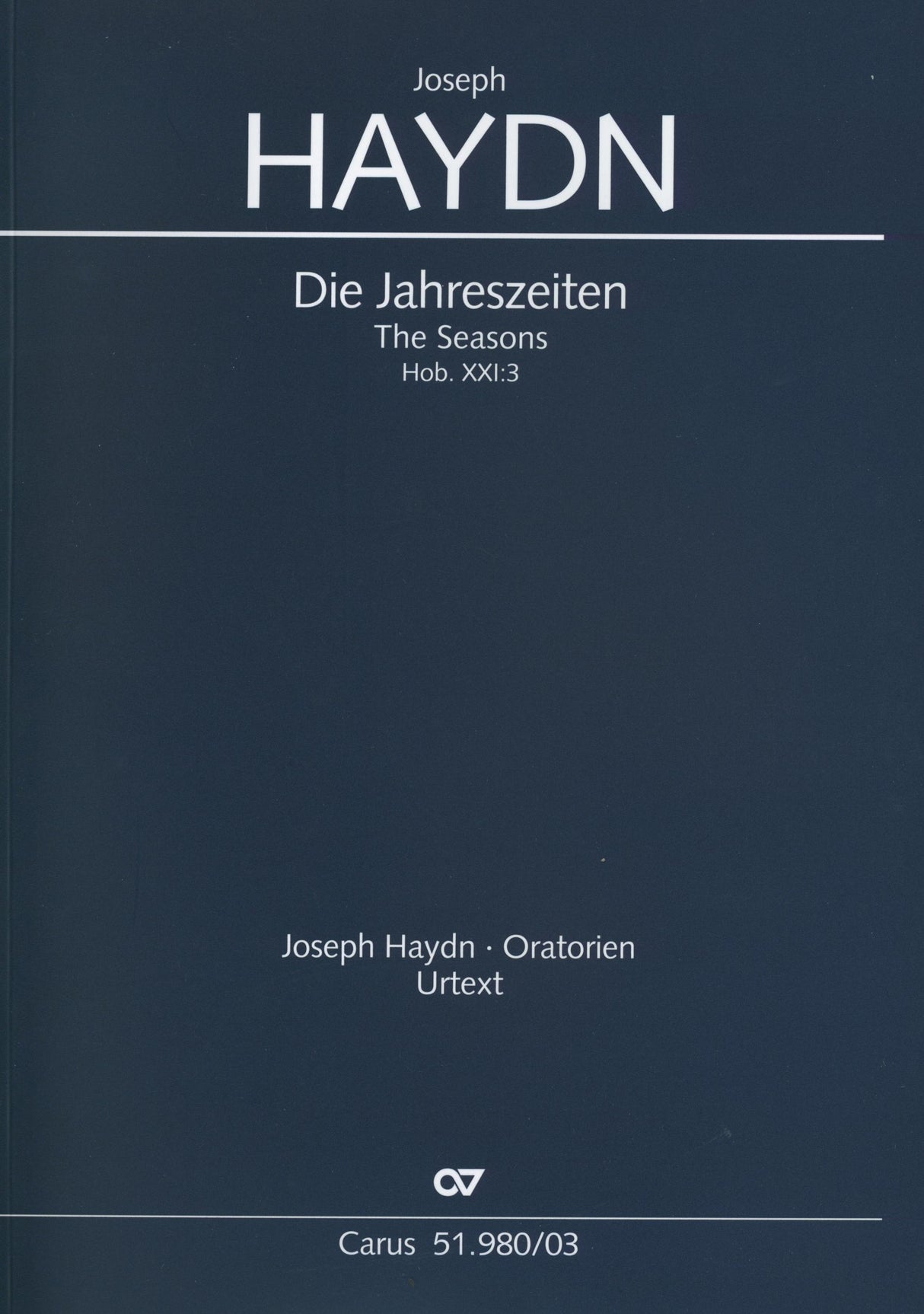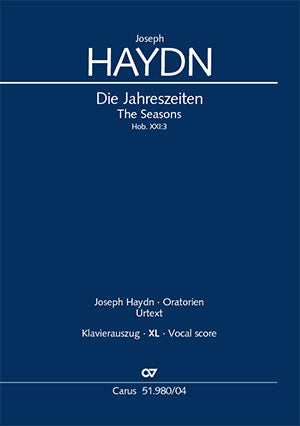Haydn: The Seasons, Hob. XXI:3
In stock and typically ships within 1 business day.
- Composer: Joseph Haydn (1732-1809)
- Instrumentation (this edition): Piano Reduction, SATB Choir
- Originally for: SATB Choir, Orchestra
- Work: The Seasons, Hob. XXI:3
- Work Languages: English, German
- ISMN:
- Size: 7.5 x 10.6 inches
- Pages: 264
- Urtext / Critical Edition
Description
Haydn's great late work in a modern Urtext edition. Joseph Haydn's two late oratorios The Creation (Die Schöpfung) and The Seasons (Die Jahreszeiten) should in many ways be regarded as of equal importance. They have a close intellectual connection with each other: whilst The Creation paints a picture of the world coming into existence as in the account in Genesis, The Seasons is about the existence of the world over the course of a year, about how the meaning of creation applies in the actual life of people through the cyclical growth and decay of nature. in compositional terms, in The Seasons Haydn follows on from formal elements in The Creation in many respects, but at the same time continues these in independent, innovative ways. So here, a fresh and creative power is seen which is in no way inferior to that in Die Schöpfung.
For this edition the sources regarded as definitive, that is the original parts from the first performance and the first printed edition, have been consulted in a careful evaluation of the variant readings. in order to distinguish between the variant readings, passages and items adopted from the first printed edition are highlighted graphically. Thus a musical text is offered which can claim the greatest possible authenticity. The performance material is laid out so that various different original scorings can easily be realised. The material includes a harpsichord part for all the numbers, and a chorus score. The vocal score is based on the original reduction by August Eberhard Müller, which was specifically praised by Haydn, lightly arranged to conform with modern-day requirements.
Publishers use a lot of words to describe what they sell, and we know it can be confusing. We've tried to be as clear as possible to make sure you get exactly what you are looking for. Below are descriptions of the terms that we use to describe the various formats that music often comes in.
Choral Score
A score for vocalists that only contains the vocal lines. The instrumental parts are not there for reference. Generally, cheaper than a vocal score and requires multiple copies for purchase.
Facsimile
Reproductions of the original hand-written scores from the composer.
Full Score
For ensemble music, this indicates that the edition contains all parts on a single system (there are not separate parts for each player). In larger ensembles, this is for the conductor.
Hardcover
Hardbound. Generally either linen-covered or half-leather.
Orchestral Parts
Similar to a wind set, this is a collection of parts. In the case of strings, the numbers listed are the number of copies included, though generally these are available individually (often with minimum quantities required).
Paperback
When publishers offer multiple bindings (e.g. hardcover) or study scores, this is the "standard" version. If you're planning to play the music, this is probably what you want.
Performance / Playing Score
A score of the music containing all parts on one system, intended for players to share. There are not separate parts for each player.
Set of Parts
For ensemble music, this indicates that there are separate individual parts for each player.
Solo Part with Piano Reduction
For solo pieces with orchestra, this is a version that contains a piano reduction of the orchestra parts. For piano pieces, two copies are typically needed for performance.
Study Score
A small (think choral size) copy of the complete score meant for studying, and not playing. They make great add-ons when learning concertos and small chamber works.
Vocal Score
A score prepared for vocalists that includes the piano/organ part or a reduction of the instrumental parts.
Wind Set
For orchestral music, this is a collection of wind and percussion parts. The specific quantities of each instrument are notated.
With Audio
In addition to the printed music, the edition contains recordings of the pieces. This may be an included CD, or access to files on the internet.
With / Without Fingering (Markings)
Some publishers prepare two copies - a pure Urtext edition that includes no fingering (or bowing) suggestions and a lightly edited version that includes a minimal number of editorial markings.





